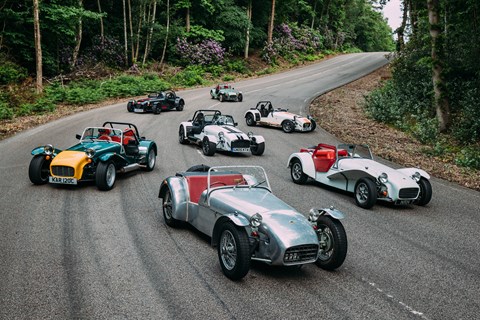► Caterham Seven at 60
► It’s still going strong
► Most famous models driven
What do Sid Vicious, Stephen Fry and the Caterham Seven have in common? They all began life in 1957. Fast-forward 60 years later and the Seven doesn’t show any signs of stopping. Despite the Seven changing hands between Lotus and Caterham throughout the years, the Seven has become the lifeblood of Caterham Cars.
To celebrate 60 years of the Seven, we were invited to drive some of the most famous Seven models, from the very first Lotus Seven model right up to Caterham’s most hardcore track day specials on sale now.
Read on for our 60-year time warp of the UK’s most famous kit car.
The original: the Lotus Seven Series 1
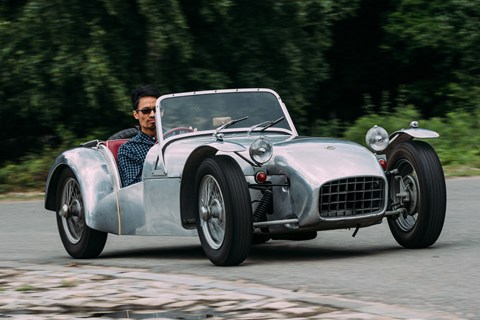
Starting life as a Lotus Seven, this affordable sports car was offered as a self-assembly kit for £526. Putting this minimalist car together yourself was a bid to sidestep British tax requirements.
To avoid being taxed altogether on the kit, no assembly instructions could be included – but since there was no rule covering ‘disassembly instructions’, those savvy customers simply had to follow the guide in reverse.
Hopping into a Caterham Seven is always a novel experience, but this, is a time warp.
The rear-view mirror mounted on a footstand looks more like a smartphone holder and describing the fixed, floor-mounted cushions as ‘seats’ would be an overstatement. This is more like throwing some sofa cushions on the floor when you’re crashing at a house party.
The pedal layout can be best described as slightly unorthodox and brings a whole new meaning to the word ‘compromised’.
You operate the clutch pedal with the outer side of your foot while your sole brushes along the steering column. The brake pedal is as firm as a brick – in conjunction with your butt cheeks as you pray that all four drum brakes stop you in time before rear-ending the 620S in front. Curiously, the sprouting accelerator pedal is surprisingly sensitive.
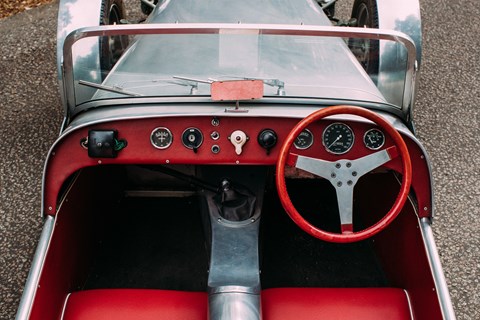
Combine this with the large wooden steering wheel and you begin to ponder whether life would best be viewed in black and white. It’s also a dimension away from what many would describe as a sports car today; the fact that the Series 1 isn’t particularly fast and has a reluctance to change gear encourages a more relaxed approach to head down a winding road.
Jumping straight into the 620S after driving this suddenly feels so easy, with the tiny gearlever being the only familiar control in here. Relativity’s a funny thing.
Number produced: 242
The TV star: the ‘Prisoner’ Seven
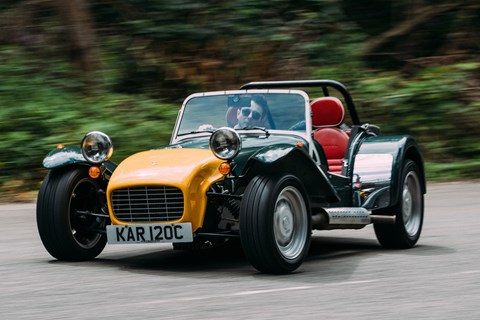
Featuring in the 1960’s drama The Prisoner, this Seven can be identified by its unique yellow and green paint scheme and all-red interior. With seats reminiscent of the Series 1, combined with the more modern interior layout, this is by far the most comfortable Caterham here.
With heavily padded seats to sink into, the notion of driving fast dissipates as your legs tire out from driving the rest of the range. This is without doubt the most civilised and car-like Seven here. There’s even thick carpet and a more conventional gearknob here, with a sense that an engineer read an extra chapter in the mighty book of NVH.
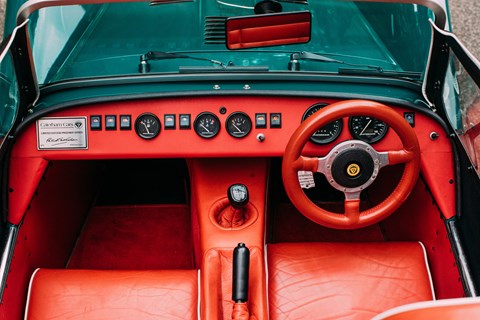
Turn down the pace and life suddenly feels more serene. Even the 1.8-litre VVC Rover engine feels relatively docile at low revs – that is, until the gush of wind comes barrelling from the side due to a lack of any doors.
Make no mistake: this is still a Caterham and despite the mixture of lightweight agility and added comfort potentially sounding like an odd mix for some hardcore fans, you can’t escape the level of theatre.
Tip: spot the ‘PRI’ prefixing the chassis numbers to identify these.
Number produced: 47
The more spacious one: CSR 260
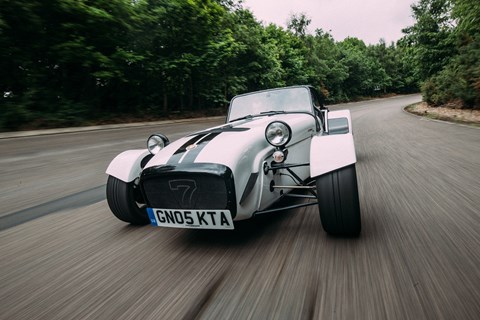
This was a pleasant surprise: a Seven that’s undergone altitude training, with a bigger 2.3-litre heart and more ability to handle the forces of nature.
There’s a surprising amount of comfort despite the bucket seats and racing paraphernalia. With the help of fully independent rear suspension, push-rod suspension up front and a wider chassis, this doesn’t feel that far removed in balance from the current 310 in terms of comfort and fun.
Despite the 2.3-litre Ford Duratec engine developing over 100hp extra in power – producing 260hp and 272Nm – it’s higher up in the rev range before you access the difference.
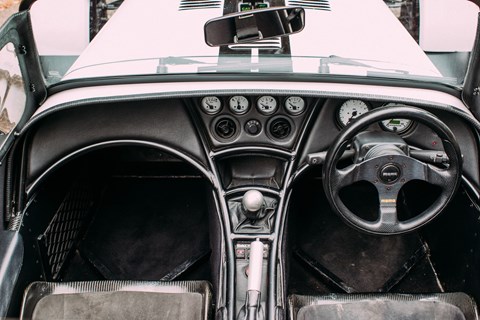
When you do decide to push on, it’s when you realise that the CSR can deal with so much more at higher speed. If anything you lose some of the fun thanks to the higher sense of grip at the rear.
The CSR was intended to be a more road-friendly version of the Seven, so the interior was redesigned to be more user-friendly. With column stalks fitted for the wipers and lights, this led to a reconstruction of the lower dash and freed up space on the dash to centrally group the dials and add a pair of air vents. Nicknamed the ‘swoopy dash’, this also led to additional space for legroom and a storage net.
However, while the redesign offered a fresh, more convenient environment, this wasn’t in keeping with the firm’s ethos of simplicity and lightness.
The windscreen-less lunatic: the R500
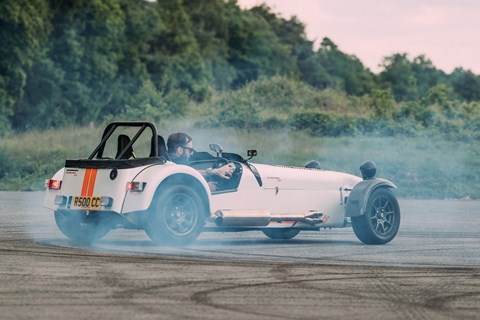
With a 263bhp Ford Duratec engine, carbon front and rear wings, carbon nose, Kevlar race seats, carbon dashboard and optional sequential gearbox fitted, this is the most focused Seven here.
The absence of a windscreen and the sequential gearbox on this particular example evokes a sense of excitement and mischievous behaviour from the moment you climb in. Your pulse starts to rise and you impatiently want to fire up the engine just to find out whether the idle itself can shake up your senses.
There’s a satisfying metallic clunk as the gearlever pushes against the gate whenever you make a gearchange but the lack of lurching and smoothness makes you wonder if this would be a good option to have on more cars.
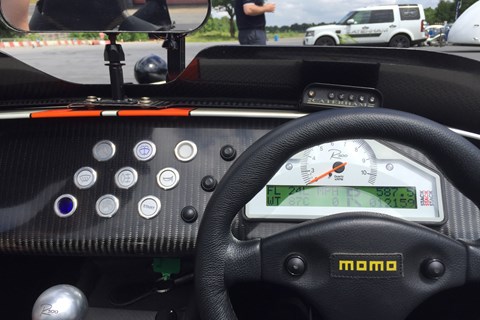
Mind you, the option you’d want to consider first here is a helmet. The absence of a windscreen will mean your face will feel the force at just 50mph and your sunglasses will begin flapping as you reach motorway speeds. At that point you haven’t even began to stretch the engine to towards the 8500rpm limiter yet.
Sensing the power delivery when being pushed back into your seat is one dimension, but feeling it on your face is another. It’s completely encompassing.
Numbers produced: 45 (for UK market)
The most extreme yet: 620S
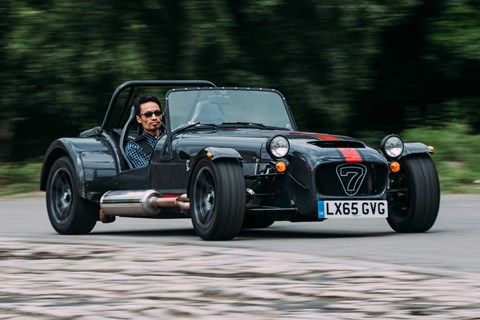
Effectively replacing the R500, the 620 is the current heavyweight of the Seven range. There’s 310bhp on tap from the 2.0-litre Ford engine, which reels in the 62mph mark within 2.9 seconds. This is the firm’s fastest road car to date – and the first one to be fitted with a supercharger.
Read the road test of the 620S here
Is it too much of a good thing? Maybe for some. With all the other Sevens in the range feeling just on the right side of quick, the 620 conjures up an initial sense of caution with its more brutal demeanour. It’s much more relaxed when pootling about using the accessible low-down power, but the level of instant shove from prodding the accelerator is one barbaric wake-up call.
This is one for the ultimate adrenaline junkie with £50k to spend.
The retro throwback: the 160 Sprint
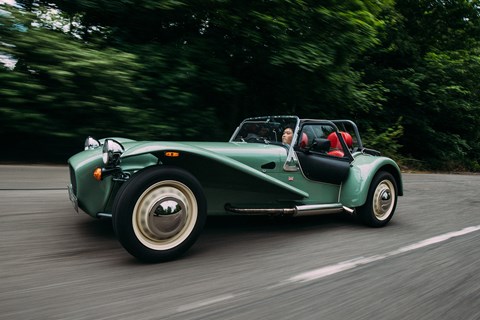
Celebrating the 60th Anniversary with 60 examples, the 160 Sprint reintroduces the front wings, rear-mounted spare wheel, plush(er) red interior and large wooden steering wheel as found on the original models.
Read the road test of the 160 Sprint here
To bring the back-to-basics approach of the Series 1, the Sprint is based on the Caterham 160. With a modest 80hp from its turbocharged 3-cyl Suzuki engine, this is also the most economical variant of the Seven. It’s no slouch, though, when compared to the Series 1 thanks to its short gearing. Only the slightly oversized steering wheel and short stubby gearlever bringing you close to the sensation of the original.
Read all of our Caterham reviews here
